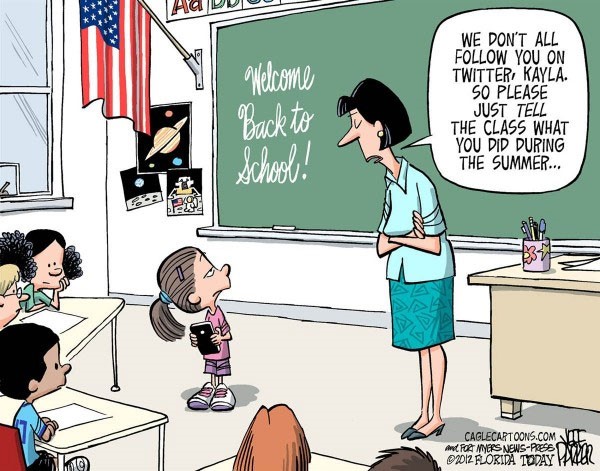The following is a reflection on week 8 reading in ED 256: Tech and Education class, for which this blog was made, on technology in higher education.
----------------------------------------------------------------------------
This discussion is based on the following reading:
L. Breslow. "Lessons Learned: Findings from MIT Initiatives in Educational Technology (2000-2005)."
J. of Science Education and Tech. Vol. 16, No. 4, August 2007
S. Hooper and L.P. Rieber. "Teaching with Technology."
Teaching: Theory into practice. pp. 154-170. Needham Heights, MA: Allyn and Bacon.
----------------------------------------------------------------------------
This week's reading focuses on various technology-based tools used in higher education institutions. Hooper and Rieber outline the process and paths in which technology is integrated into the education system. These are familiarization, utilization, integration, reorientation, and evolution. They propose that traditional education is limited to the first three phases and that only when reaching reorientation and evolution does a change in teaching philosophy occur. Reorientation is when the "learner becomes subject rather than object of education" and evolution is when an actual change in the classroom occurs. Interestingly, Hooper and Rieber define that such an evolution occurs under the philosophy of constructionism, in which the learner is active and is the focus. They propose that
1) effective learning consists of selection, organization, and integration,
2) effective learners actively process lesson content,
3) presenting information from multiple perspectives increases durability of instruction, and
4) effective instruction builds on students knowledge and experiences.
This is indeed the case, given recent research on the process of learning, so they are valid points. Several examples of possible implementations are given by Breslow, who describes initiatives at MIT. Their major findings are that
1) successful technology must meet the unmet or poorly met needs compared to traditional methods,
2) too much technology or bad technology is detrimental, and
3) there is an important relationship between technology and the learning environment.
I appreciated the balance of perspectives offered in this paper of several technology-based tools in several of the engineering classes offered at MIT, such as an online posting forum and online lectures. In many cases, the success of the technology depended on the audience. For instance, whereas alumni valued the online forums, undergraduates found them cumbersome. It is idea that "media are not neutral conveyances-" they are biased, limited, and application dependent.
Indeed, I can speak to one particular example known as TEAL (Technology Enabled Active Learning), which was implemented in all introductory physics classes when I was a freshman. TEAL is based on the usage of clickers, in which students submit answers electronically to some questions (most often on a powerpoint slide). The paper lists several successes of TEAL in 8.02T (a course on electromagnetism. MIT associates numbers with classes, so 8.02 means it is a course in the physics department, i.e., course 8). While I can see the intention of the TEAL program to encourage interactive and engaged learning, my memories of it were more aligned with the criticisms of TEAL. Often times students forgot the clickers, didn't bother to click, or tried to game the system. In the particular class I took, the presence of clicker questions fell off after the first few lectures of class, after I had to spend a good $40 on the clicker itself. In many cases, the questions that were asked were not actually helpful for learning; they were simple, by nature of being multiple-choice. What was actually more useful was going through problems in groups and practicing problems from different textbooks to get different perspectives on the same concept.
I think Breslow makes several good points about bot the limits and potential of technology in higher education. Namely, there are limits and that one must carefully consider if technology is the appropriate medium. One example of this are the online lectures from past classes. In several cases, I have used online lectures from past semesters of professors that I heard were exceptionally compelling at lecturing but were now retired or no longer teaching that particular class. From the technologies that have been successful, it seems the common theme are the tools that encourage the flow of information among students and instructors spatially and temporally. This is where I believe technology has a great potential in higher education.


































